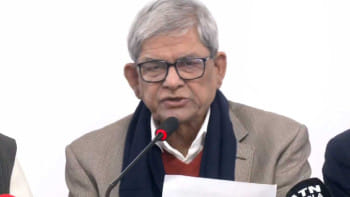Our climate budget needs some adjustments

In his speech presenting the FY2023-24 budget proposal, the finance minister talked about climate change to a great extent. He didn't focus much on climate change impacts; rather, he emphasised the ongoing and future investments in a wide range of adaptation and mitigation measures, including climate-smart agriculture, gender-responsive climate action, and preparing the future generations with proper climate education. The government's attention to climate action is further reflected in the FY24 climate budget of Tk 37,052 crore, which is 8.99 percent of the allocations for 25 ministries and divisions combined, 4.86 percent of the country's total budget, and 0.74 percent of the GDP.
However, the new climate budget has a few shortcomings, too. First, we see anomalies in the same budget figure in different documents. For example, the actual expenditure for FY20 is stated to be Tk 18,918 crore in FY24's document, Tk 18,025 crore in FY23's document, and Tk 17,924 crore in FY22's document. For FY22, the revised budgets are Tk 28,363 crore in FY24's document and Tk 26,407 crore in FY23's document. The FY23 climate budget is cited to be Tk 32,409 crore in FY24's document, but Tk 30,532 crore in FY23's document. Some of these variations are as big as almost Tk 2,000 crore. The Finance Division needs to urgently fix these inconsistencies.
Second, Bangladesh has been preparing country-wide disaster/climate vulnerability maps down to union level for long. Capacity-building of local government institutions, vulnerable communities, and civil society organisations to prepare and implement climate action plans using diverse funding mechanisms were also tried by different donor-funded projects over the last two decades. The Comprehensive Disaster Management Programme Phase II (CDMP II, 2010-2014) and its innovative Local Disaster Risk Reduction Fund (LDRRF) are good examples. The Local Government Initiative on Climate Change (LoGIC, 2016-2023) is a more recent initiative, where vulnerability-based allocation is advocated for, and actions of union parishads are financed through Performance-Based Climate Resilience Grants (PBCRG). Despite such long-standing needs and experience so far, in the latest climate budget, we only see division-wise allocations of the Bangladesh Climate Change Trust Fund (BCCTF).
Third, over the last few years, the world has increasingly been talking about youth engagement in climate debates and actions. But, interestingly, Bangladesh's youth ministry or its Department of Youth Development (DYD) isn't one of the 25 ministries and divisions receiving climate-relevant allocations. This is surprising since youth is the crucial part of our workforce, and climate-resilient, green employment has long been promoted by different development agencies. It is therefore important that the ministry and the DYD identify their climate-relevant allocations, and the Finance Division properly include them in the climate budget of FY25.
Fourth, in addition to annual allocations and expenditures by the government agencies, Bangladesh's climate budget also documents ongoing and planned climate actions; these lists, however, vary from year to year. For example, the BCCTF's ministry-wise allocations have always been part of the climate budget. But other related information talks about funding needs, rather than the available funds. The Nationally Determined Contribution's (NDC) intervention-wise funding needs, for example, is as old as the climate budget, while a list of climate-relevant projects of the Bangladesh Delta Plan 2100 was introduced in FY20. In 2016, the Country Investment Plan for Environment, Forestry and Climate Change (EFCC-CIP) was launched with a big expectation, and its programme-wise fund allocations found their place in the climate budgets of FY20 to FY22. The long list of pipeline projects for the Green Climate Fund (GCF) had a shorter life, spanning over FY21 and FY22.
In the new climate budget, three new items are included: six ongoing GCF projects, nine ongoing Global Environment Facility (GEF) projects, and funding requirements for 113 priority interventions of the National Adaptation Plan of Bangladesh (2023-2050) (NAP2050), which the government approved in October 2022. While listing down how much money we need to implement the climate plans gives us a sense of direction, progress of funding these plans should be tracked as well. Therefore, future climate budgets should include a section on financing the Delta Plan, the NAP2050, the NDC, and the Mujib Climate Prosperity Plan (MCPP).
Finally, while the new national budget is 2.6 times larger than that of FY2015-16, its climate budget grew by 3.1 times over the same period. To improve the accountability in climate finance, the Finance Division should move away from publishing PDF documents on its website, and establish a "Bangladesh Climate Finance Portal." This portal will bring together the climate budget-related information on different government agencies, development partners, climate pots, and climate action plans in one place, making it easier to understand their interlinkages, while tackling some of the shortcomings mentioned above. In this way, we will be able to track the real investments in tackling the climate crisis, thus avoiding sectoral and geographical overfunding, underfunding, and double counting.
Dr Haseeb Md Irfanullah is an independent consultant working on environment, climate change, and research systems. He can reached at [email protected]

 For all latest news, follow The Daily Star's Google News channel.
For all latest news, follow The Daily Star's Google News channel. 










Comments